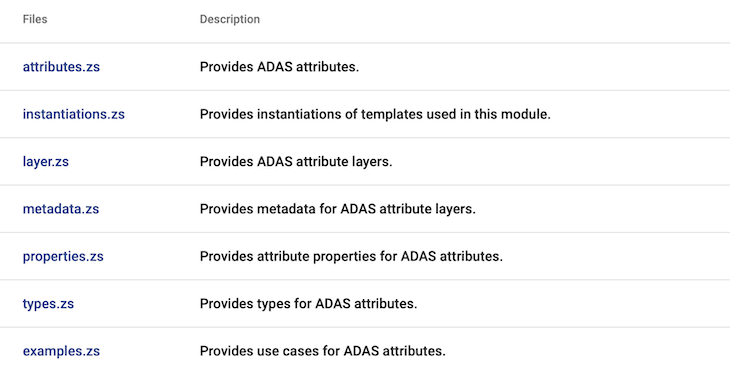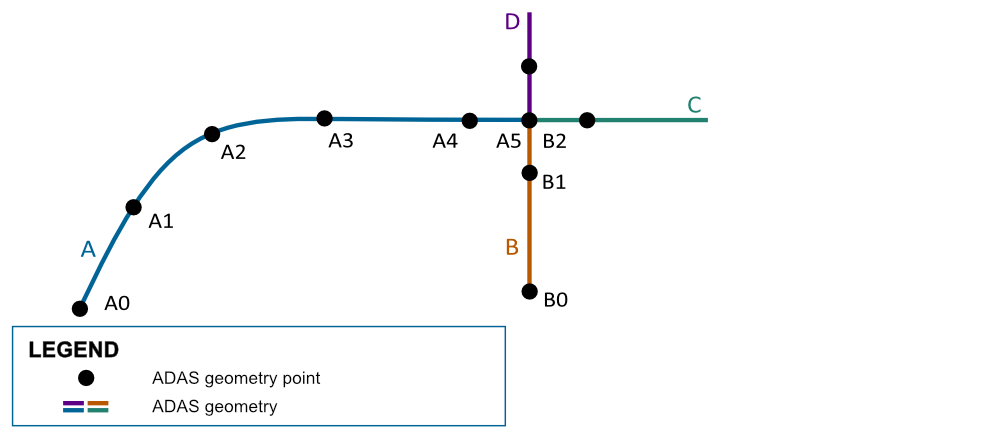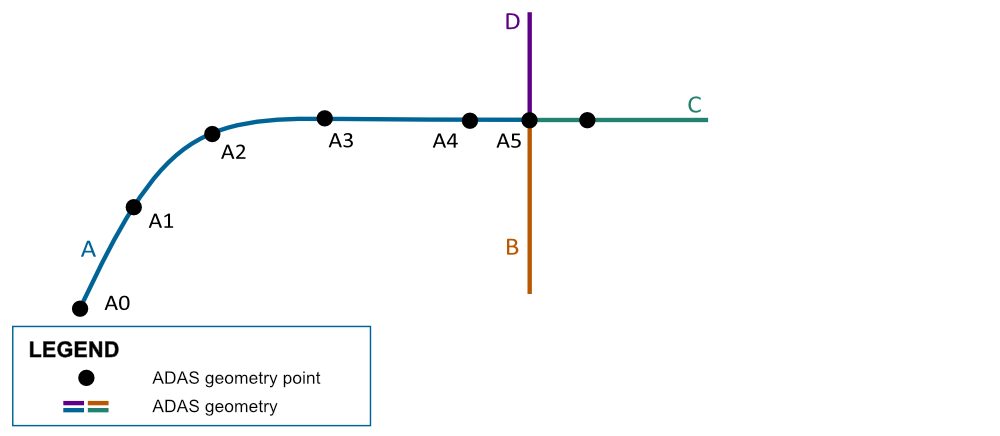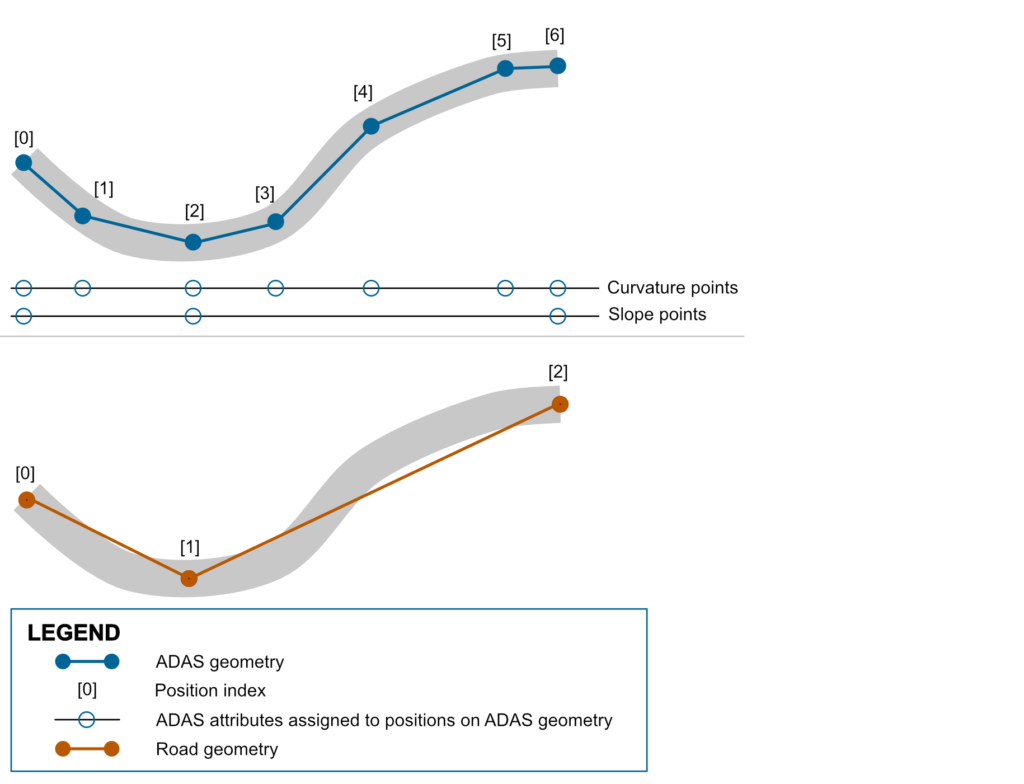As the automotive industry moves towards autonomous driving and advanced driver assistance systems (ADAS), seamless and reliable data exchange is more critical than ever. A common data standard like NDS.Live ensures that vehicles, sensors, and navigation systems can communicate efficiently, enabling real-time decision-making and enhanced safety. Without standardized data structures, automotive companies face interoperability issues, increased development costs, and limitations in innovation. Here you can find out more about the NDS.Live ADAS module to support ADAS use cases.
Advanced driver assistance systems (ADAS) are designed to enhance the safety and convenience of driving by using various sensors and other technologies to monitor the vehicle’s surroundings. The ADAS module in NDS.Live offers attributes to support ADAS use cases such as slope, curvature, clothoid, gradient, or comfortable speed.
These ADAS attributes are valid for positions or ranges on a feature geometry or a dedicated ADAS geometry. The ADAS geometry is independent of the road geometry and can contain different positions than the corresponding feature geometry. The ADAS attributes can be assigned to roads, road locations, lanes, or transitions using the corresponding layer.

The NDS.Live ADAS module includes the following files:

This NDS.Live module uses zserio BIN version 1.*
ADAS attributes such as slope and curvature values can be assigned to transitions, roads, road locations, or lanes using separate attribute layers.
Example 1: The following figure shows an intersection with four roads, A, B, C, and D, including ADAS geometry. Curvature values are available for all ADAS geometry points. Turn geometry curvature values are available for all turning transitions, for example, from A to B. For the straight transitions, no turn geometry data is available, for example, from A to C.

Example 2: The following figure shows an intersection with three roads, A, B, and C, including ADAS geometry for all roads. Roads A and C have valid curvature data, including the end points. Road B has valid curvature values for ADAS geometry points B0 and B1 and the value UNKNOWN for end point B2, which is in the same location as A5. No turn geometry curvature values are required. The curvature profile for the transition from A to B gets the value UNKNOWN for the transition point, indicating that the curvature value for this turn is unknown.

ADAS geometry is the geometry of a road that is used to assign ADAS attributes. In contrast to the positions of road, road location, or lane geometries, ADAS geometry is stored with ADAS precision as needed by the attributes. The ADAS geometry is independent of the feature geometry and can contain different positions than the geometry of a road, road location, or lane.
The following figure illustrates the difference between ADAS geometries and regular feature geometries. In this example, the ADAS geometry has more positions than the road geometry. These positions are used to assign slope and curvature values.

To learn more about NDS.Live, please visit the NDS.Live Developer Portal.
Back to news →